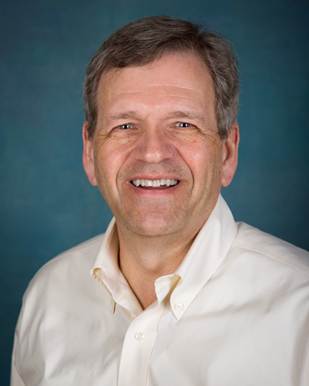Webinar 25th September: Prof. Matthew O’Donnell: Coordinate-Independent 3-D Ultrasound Principal Stretch and Direction Estimation for Cardiac Strain Imaging
We are thrilled to announce the September webinar session for the UK & Ireland Ultrasonics, Ferroelectrics and Frequency Control chapter. This event is a fantastic opportunity to share knowledge, foster collaboration, and build a strong community.
Coordinate-Independent 3-D Ultrasound Principal Stretch and Direction Estimation for Cardiac Strain Imaging
Prof. Matthew O’Donnell, Professor of Bioengineering, University of Washington
In clinical ultrasound, current 2-D strain imaging cannot fully present three orthogonal normal strain components. Most systems also lack shear strain information, as displaying all strain components is hard to interpret. Here we propose 3-D, high-spatial-resolution, coordinate-independent strain imaging based on principal stretch and axis estimation. All components are transformed into three principal stretches along three normal principal axes, enabling direct visualization of the primary deformation.
To estimate principal stretches and axes relatively independent of the ultrasound view, we devised an efficient 3-D speckle tracking method with tilt filtering, incorporating randomized searching in a two-pass tracking framework and rotating the phase of the 3-D correlation function for robust filtering. This approach significantly improves estimates of axial displacement gradients. Non-axial gradients are estimated by a correlation-weighted least-squares fit constrained by tissue incompressibility.
Simulated and in vivo canine cardiac datasets were evaluated to estimate Lagrangian strains from end-diastole to end-systole. The proposed speckle tracking method improves displacement estimation by a factor of 4.3 to 10.5 over conventional 1-pass processing. Maximum principal axis/direction imaging enables better detection of local disease regions than conventional strain imaging, as illustrated below.
Figure: Ultrasound 3-D cardiac strain imaging using novel principal directions provides more robust, high-resolution detection of ischemic regions than traditional radial strain imaging.
In summary, we have developed a coordinate-independent tracking procedure that can identify myocardial abnormalities with high accuracy and enhance robustness in cardiac strain imaging.
We encourage you to distribute this event to your own networks to maximize participation and engagement.
Thank you for your support, and we look forward to seeing you at the webinar!
On behalf of the UK & Ireland Ultrasonics, Ferroelectrics and Frequency Control Chapter:
Katy Tant (Chair)
Andrew Feeney (Vice-Chair)
Koko- Lam (Secretary)
Andrew Reid (Treasurer)
Weihuan Kong (Events)
Alicia Gardiner (Publicity)
Date and Time
Location
Hosts
Registration
-
 Add Event to Calendar
Add Event to Calendar
Speakers
Prof Matthew O’Donnell
Biography:
MATTHEW O’DONNELL, Ph.D.
Following undergraduate, graduate, and post-doctoral training at Notre Dame and Washington University in St. Louis, Dr. O’Donnell joined General Electric Corporate Research and Development Center in Schenectady, NY in 1980, where he worked on medical electronics, including MRI and ultrasound imaging systems. In 1990, he moved to University of Michigan in Ann Arbor, MI where he held appointments in Electrical Engineering & Computer Science and in Biomedical Engineering. In 1998, he was named the Jerry W. and Carol L. Levin Professor of Engineering. From 1999-2006 he also served as Chair of the Biomedical Engineering Department. In 2006 he moved to the University of Washington in Seattle, WA where he was the Frank and Julie Jungers Dean of Engineering from 2006-2012. He is now Frank and Julie Jungers Dean Emeritus and a Professor of Bioengineering at the University of Washington. His most recent research has explored new imaging modalities, including elasticity imaging, in vivo microscopy, optoacoustic devices, photoacoustic contrast agents for molecular imaging and therapy, laser ultrasound systems, and catheter-based devices. He has won numerous awards, including the Distinguished Alumni Award from the University of Notre Dame, the Achievement and Rayleigh Awards from the IEEE-UFFC Society and the William J. Morlock Award for Excellence in Biomedical Technology from the IEEE-EMBS Society. He is a fellow of the IEEE and AIMBE and is an elected member of the Washington State Academy of Sciences and the National Academy of Engineering.


